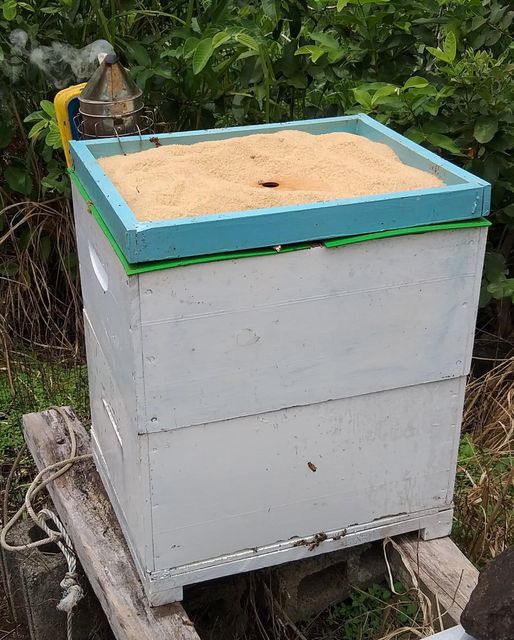More bee colonies die during the rainy season than any other time of the year in Fiji.
The major risks are starvation, loss of a queen, and now, varroa mites.
Starvation
Natural nectar and pollen is rarely abundant for the bees to eat in this season, so bees must rely on stores in the hive.
If they don’t have enough honey stored, the colony can become so weak they can’t make a crop of honey, and may even starve to death.
Feeding 2 kilograms of dry sugar on the inner cover is a simple way to prevent starvation.

Queenless
Swarming is natures way of starting new bee colonies, but it isn’t always successful.
The old queen leaves the hive and the new queen may not successfully mate and return to the hive.
Most colonies that have been queenless for several weeks cannot be restarted with addition of eggs and brood.
It is best to save the equipment by transferring the frames of comb to another hive after shaking the failed colony bees onto the ground, and then splitting a healthy colony.
Caution
Sometimes a hive that has no brood is not really queenless. In times of extreme drought or rains, when almost no nectar is available, some queens will stop laying completely.
Feeding the bees usually causes the queens to resume egg-laying.
One clue as to whether a colony is really queenless is the sound it makes when smoked.
A queenless colony will make a roaring sound by fanning their wings far more than a queen-right colony.
Varroa Mites
Varroa mites are also more problematic as a bee colony’s population declines, as the mite “load”, or ratio of mites to bees, increases.
If mites have been in your hives for a year without treatment, it’s a good time of year to treat so the bees have a low mite load for the May nectar flow.
A simple guideline is to treat for mites if a mite is observed on more than one in ten drone pupae.
Spearing drone pupae with an uncapping fork is a simple way to examine them.
Varroa Mite Treatments
Unfortunately, Fiji’s Ministry of Agriculture has not yet registered many of the mite treatments used in other counties, despite beekeeper requests.
Thus current treatments are limited to either buying Apistan (available from Commercial Honey Supplies) or importing treatments on your own.
More treatment options will probably become available later this year.
In summary, when inspecting bee hives in this season, any hive that doesn’t have some sealed honey should either be fed or given honey from another healthy hive.
Pull a frame or two from each colony to confirm a laying queen and healthy brood. And treatment for mites if needed.
Author : Thank you to John Caldera, Fiji Beekeepers Association for his original post
https://www.facebook.com/groups/FijiBeekeepers/permalink/1408665139488215
